2021 US Government National Blueprint for Lithium Batteries
By:
+David Herron; Date: October 27, 2021
Tags: Batteries »»»» Lithium Batteries
Released in June 2021, the National Blueprint for Lithium Batteries lays out a plan for ensuring the USA has its own capacity to research and manufacture advanced lithium-ion batteries. It would be sad to trade a dependency on foreign oil for a dependency on foreign-manufactured lithium batteries. As it stands now, as with many kinds of products, China is the big kahuna in advanced battery research and manufacturing.
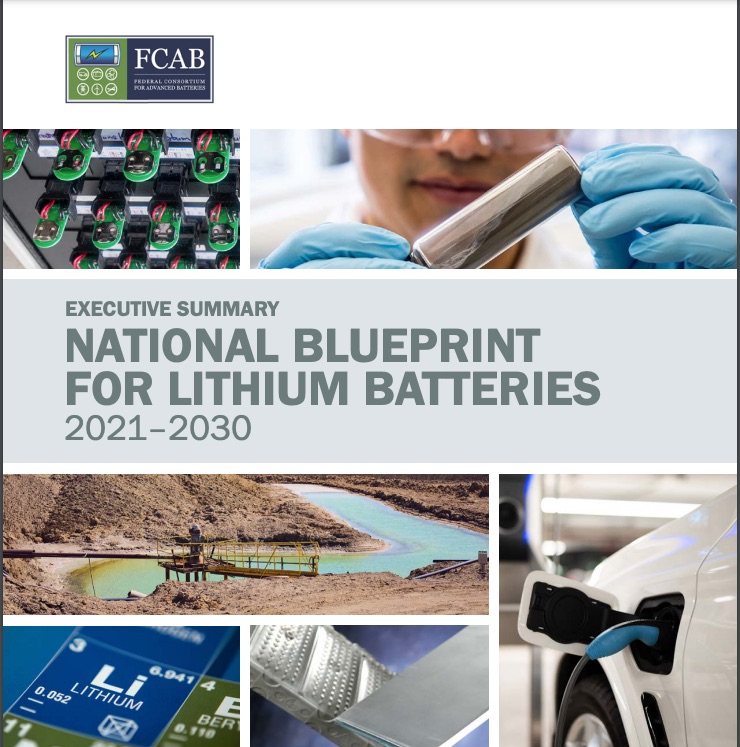
Lithium batteries are in the process of revolutionizing the energy system. At one end of the spectrum, lithium batteries made smart phones and tablet computers possible. The energy density and reliability of lithium batteries allowed device makers to create ever-smaller devices with long talk time. At the other end of the spectrum, lithium batteries are used in an ever-increasing list of vehicles from electric bicycles, to electric cars, to electric trucks, and even to electric airplanes.
But what if the world economy ends up dependent on China for lithium batteries? Currently the world economy is dependent on oil from a limited number of regions with crude oil reserves. The majority of lithium battery manufacturing happens in China, just as so many other products are primarily manufactured in China. Unlike ball point pens, lithium batteries are critical strategic products that will become central to the energy system of countries around the world.
The National Blueprint for Lithium Batteries was published by the Federal Consortium for Advanced Batteries and outlines several steps by which the USA should be able to establish domestic research and manufacturing of advanced lithium batteries.
The goals are:
- Goal 1: Secure access to raw and refined materials and discover alternatives for critical minerals for commercial and defense applications. First, this is about ensuring domestic supplies of critical raw materials. Second, seek to eliminate use of cobalt and nickel. Those to minerals are widely used in the current generation of lithium batteries, but are rare and primarily come from specific locations.
- Goal 2: Support the growth of a U.S. materials-processing base able to meet domestic battery manufacturing demand.
- Goal 3: Stimulate the U.S. electrode, cell, and pack manufacturing sectors. Policies and such to support manufacturing of lithium battery components in the USA.
- Goal 4: Enable U.S. end-of-life reuse and critical materials recycling at scale and a full competitive value chain in the U.S. The raw materials in lithium batteries are very reusable. This is about getting US-based recycling going.
- Goal 5: Maintain and advance U.S. battery technology leadership by strongly supporting scientific R&D, STEM education, and workforce development.
The common factor in these goals is to ensure manufacturing and research for these batteries happen in the USA. The US Government of course cannot prevent other countries from their own manufacturing and research of lithium batteries. But, for the economic viability of the USA, it is necessary for the USA to have a strong battery industry.
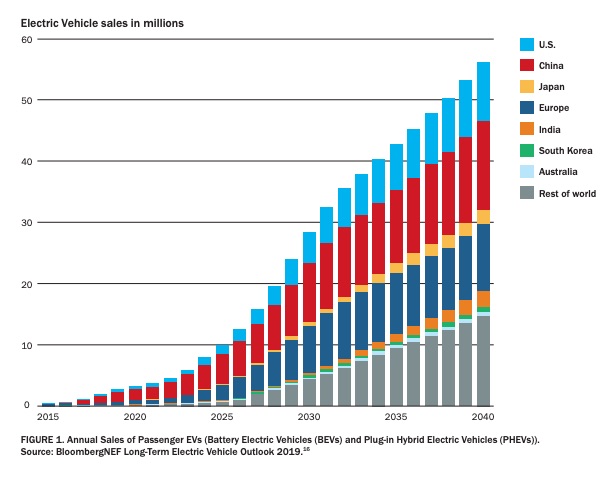
Here's one reason why this is so important - electric vehicle sales are expected to climb significantly everywhere. Clearly, for the USA vehicle fleet to adopt electric vehicles in a big way, the supply of lithium batteries had better not be dependent on China.
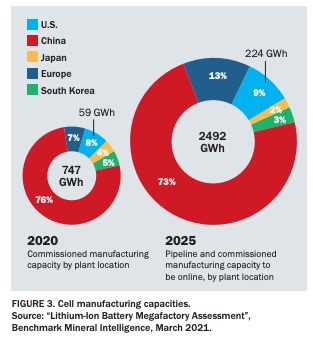
But, here's the rub - Between 2020 and 2025 lithium battery manufacturing worldwide is expected to grow by 3x, from 747 GWh/year to 2492 GWh/year. Notice that China has 76% of the pie now, due to shrink to 73%, while the USA slice grows from 8% to 9%.
That sure looks like a dependency on a foreign country for a critical resource.
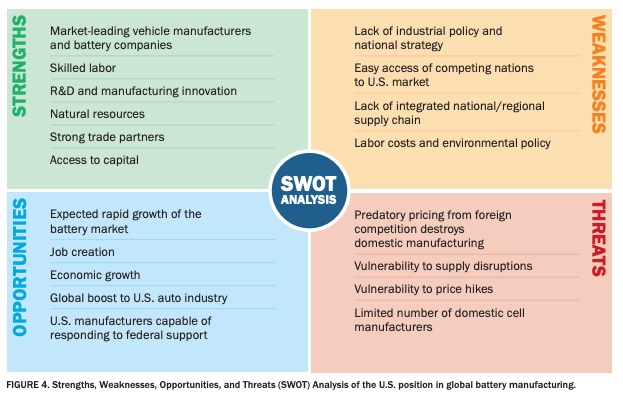
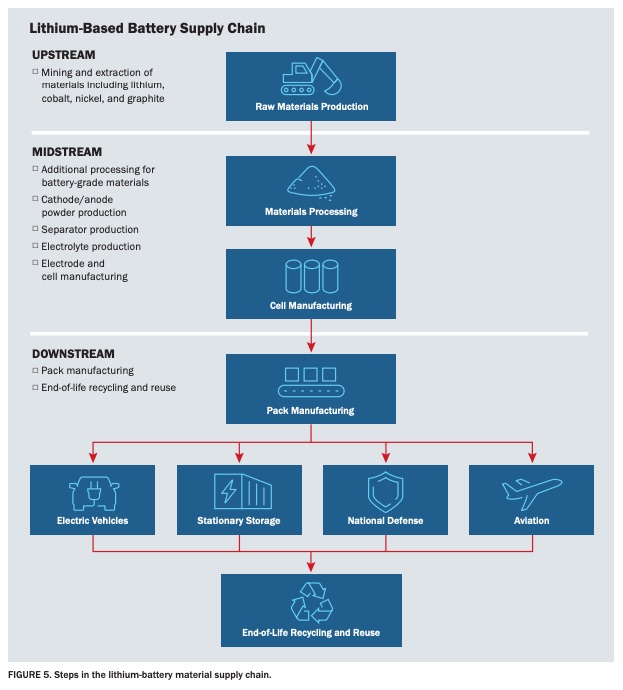
Retrieved from:
energy.gov (PDF) via Federal Consortium for Advanced Batteries
